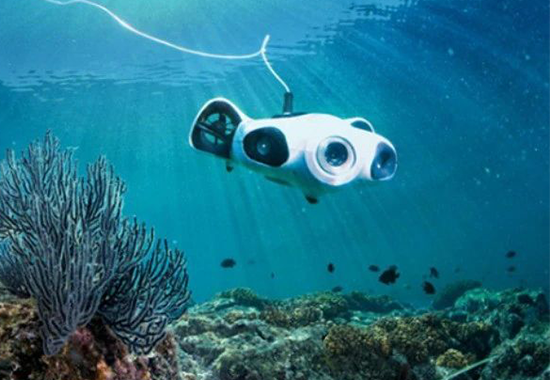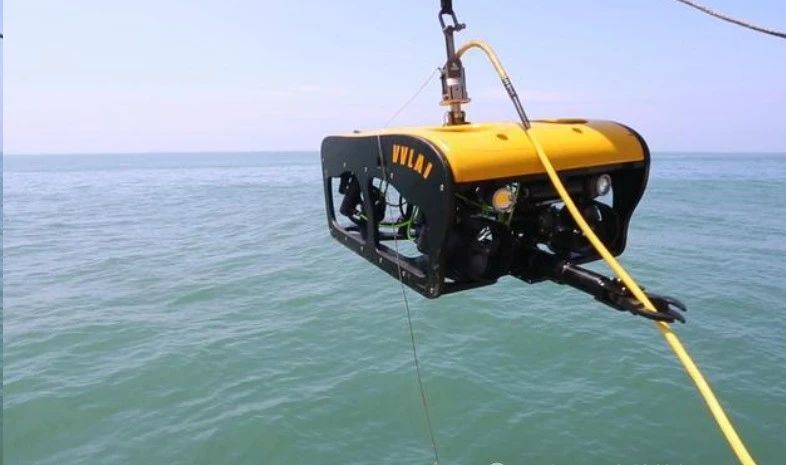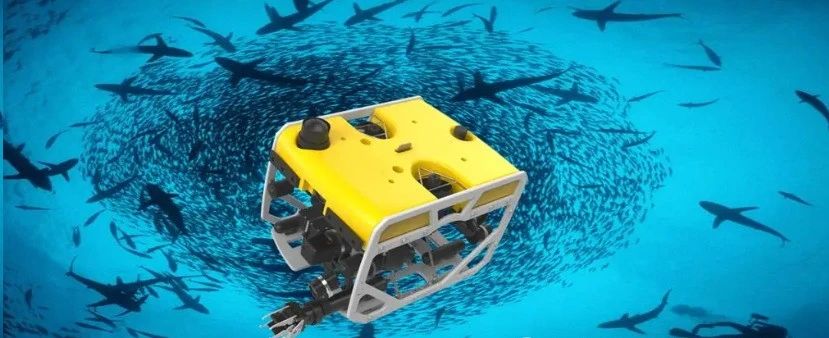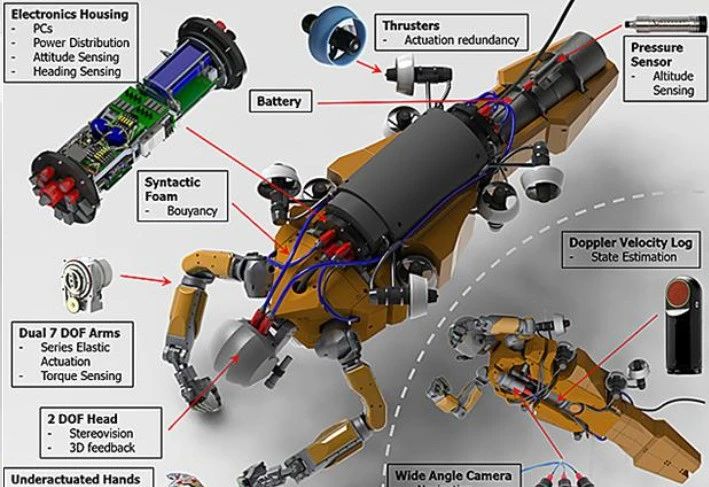Underwater robots, also known as remotely operated vehicles (ROVs) or autonomous underwater vehicles (AUVs), are extreme operation robots capable of diving underwater to perform tasks in place of humans. Due to the harsh and dangerous underwater environment and the limited depth to which humans can dive, underwater robots have become essential tools for ocean exploration.

Underwater robots are primarily used in maritime rescue, deep-sea exploration, lifesaving, and high-risk underwater operations such as mine clearance. Depending on the communication method with the surface support system, unmanned underwater vehicles can be classified into tethered underwater robots (ROVs) and untethered underwater robots (AUVs).
Tethered Underwater Robots (ROVs): ROVs receive power from a mother ship via a cable, and their underwater movements and operations are controlled and monitored by operators on the surface vessel. The cable provides power and facilitates information exchange, but the slender cable suspended in the sea is relatively fragile and may limit the robot’s range of activity and operational efficiency.

Untethered Underwater Robots (AUVs): Also known as autonomous underwater vehicles, AUVs integrate multiple technologies such as artificial intelligence, detection and recognition, information fusion, intelligent control, and system integration. They can autonomously make decisions, control themselves, and complete predetermined tasks in complex marine environments.

In recent years, China has made significant progress in underwater robot technology. For example, the “Insight” autonomous underwater robot developed in China can conduct detailed surveys and measurements at depths of up to 5100 meters, capturing high-definition photos and verifying its reliability. Additionally, there are remotely operated humanoid deep-sea robots like “Ocean One,” designed to efficiently navigate long distances underwater and perform detailed near-bottom surveys under deep-sea conditions.
The structure of underwater robots mainly includes four parts: sensors, control systems, actuators, and power systems.

Sensors: Underwater robots are equipped with various sensors to perceive and collect information about the underwater environment. These sensors may include sonar, cameras, thermometers, pressure gauges, etc., used to detect targets, identify obstacles, measure water temperature, water pressure, and other parameters, providing data support for the robot’s decision-making and actions.
Control System: The control system is the core of the underwater robot, responsible for receiving information from the sensors, making decisions and planning based on preset tasks and algorithms, and issuing commands to control the actuators to perform various actions. The control system needs to be efficient, stable, and reliable to cope with the complex and changing underwater environment.
Actuators: Actuators are the key components that enable the underwater robot to perform various functions. They drive the robot to move, grasp, detect, and perform other operations based on the control system’s commands. Common actuators include thrusters, mechanical arms, and grippers. The design and performance of these actuators directly affect the robot’s operational capability and efficiency.
Power System: The power system provides the necessary energy and power for the underwater robot, ensuring that the robot can work continuously and stably. The type of power system may vary depending on the robot, with common types including battery power and fuel engines.
Additionally, underwater robots may include other auxiliary systems such as navigation and positioning systems, communication systems, and buoyancy adjustment systems. These systems work together to enable the underwater robot to complete various tasks in complex underwater environments.
When designing and manufacturing underwater robots, it is essential to select appropriate types and configurations of components based on specific application scenarios and requirements to achieve optimal performance.
Bena Optics produces optical components, including DOMEs, which perfectly achieve the optical effects required for underwater robots.